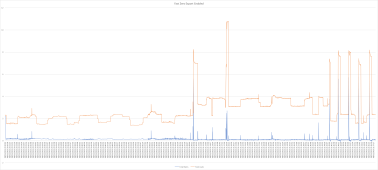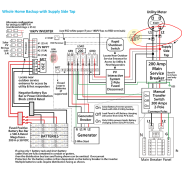Here's a few hours worth of data from my emporia with the electric dryer turned on about halfway through. The spike over 10kW is the EV charger. The last 5 spikes are the dryer running harder for some reason, idk it's just a timed dry.
I've attached the data in case anyone wants to zoom in or see the rest of my circuits.
It is going slightly negative for a very short period when the dryer is cycling off
Disclaimer: this is just another measurement method and my L1 and L2 are not balanced by several hundred watts. Would be a >10% error to cause this to not actually be exporting, but worth mentioning.

Here's a focused view on the last few minutes:

Greatest export was 127 watts during that period, it never exported for more than 1s.
I've attached the data in case anyone wants to zoom in or see the rest of my circuits.
It is going slightly negative for a very short period when the dryer is cycling off
Disclaimer: this is just another measurement method and my L1 and L2 are not balanced by several hundred watts. Would be a >10% error to cause this to not actually be exporting, but worth mentioning.

Here's a focused view on the last few minutes:

Greatest export was 127 watts during that period, it never exported for more than 1s.



